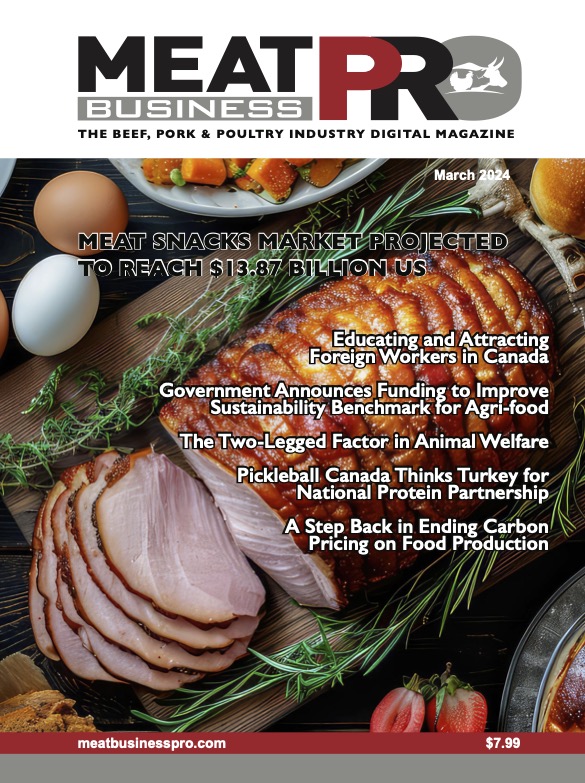TPP Lets Canadian Beef Carve a Larger Slice of Japan Meat Market

Japan’s meat imports have begun to reflect changes brought on by two free trade deals Tokyo signed, about a year after the pacts went into force
by Kazuto Shimada – Nikkei News Service
With the 11-member Trans-Pacific Partnership and Economic Partnership Agreement now fully in force, the reduced tariffs from the accords are starting to reshape the Japanese meat market.
The biggest winners are Canada and Mexico, both of which have increased exports to the country at the expense of Australian and U.S. suppliers.
While Japan’s overall imports of beef and pork have risen, beef imports from its biggest suppliers, Australia and the U.S., have decreased. Pork imports from the U.S., Japan’s largest external supplier, also slumped.
Japan imported 615,390 tons of beef in 2019, up 1.3% from the previous year, according to Trade Statistics of Japan. But imports from Australia and the U.S., which roughly account for 90% of Japan’s total imports, decreased 5.8% and 2.6%, respectively, pushing down the combined share of the two countries to 86.9% from 92% in 2018.
“In addition to the lower tariffs, Canada is becoming an “alternative producer” to the U.S. thanks to the better quality of its beef”
Australian imports decreased in part because much of its beef is now being sent to China, where demand is rising due to changing tastes, rising incomes and the African swine fever, which has decimated China’s pork stocks.
“We are losing to China in the competition for Australian beef,” a Japanese trading house official said. Australia, which supplies half of Japan’s beef imports, saw its exports to the country dip in 2019.
As a result, wholesale prices of Australian beef have jumped about 40% year on year. The U.S. attributes its smaller share to withdrawal from the TPP, under which Japan has cut tariffs on imported beef to 26.6% from 38.5%.
In contrast, Japan roughly doubled imports of Canadian beef in 2019 to 42,900 tons.
In addition to the lower tariffs, Canada is becoming an “alternative producer” to the U.S. thanks to the better quality of its beef, said an official at a major trading house. “Lower TPP tariffs were reflected in cheaper Canadian beef,” said another trading house official.
Steak restaurants are showing a growing appetite for the Canadian product based on its better flavor. Last year, a major Japanese steakhouse chain began serving Canadian beef, taking advantage of consumer preferences and lower prices — which are 30% less than American beef.
Japan is also eating more foreign pork, with imports rising 3.7% in 2019 from the previous year. European and Canadian pork imports are streaming in ahead of anticipated price increases driven by the African swine fever in China, with imports from Canada and Spain growing 4.6% and 9.8%, respectively.
The U.S. was the only major pork supplier that recorded a drop in exports to Japan in 2019. American pork exports dropped 5.2% over the year, accounting for 25.9% of Japan’s imports, down 2.5 percentage points from the previous year.
A trading house official blamed the drop on Washington’s withdrawal from the TPP, saying, “The U.S. was the sole loser.”
The Japanese meat market will undergo further changes this year as the U.S. looks to regain market share on the back of tariff cuts under the new Japan-U.S. trade accord. The cuts may be negated, however, if China increases its meat imports from the U.S., which could drive up the prices of American meat in Japan.
Still, the outlook for meat demand in China is far from clear as the effects of the coronavirus have yet to be factored in. “2020 will be difficult as there are so many uncertainties,” a trading house official said. “We’re going to take a big hit if we’re not careful.”











